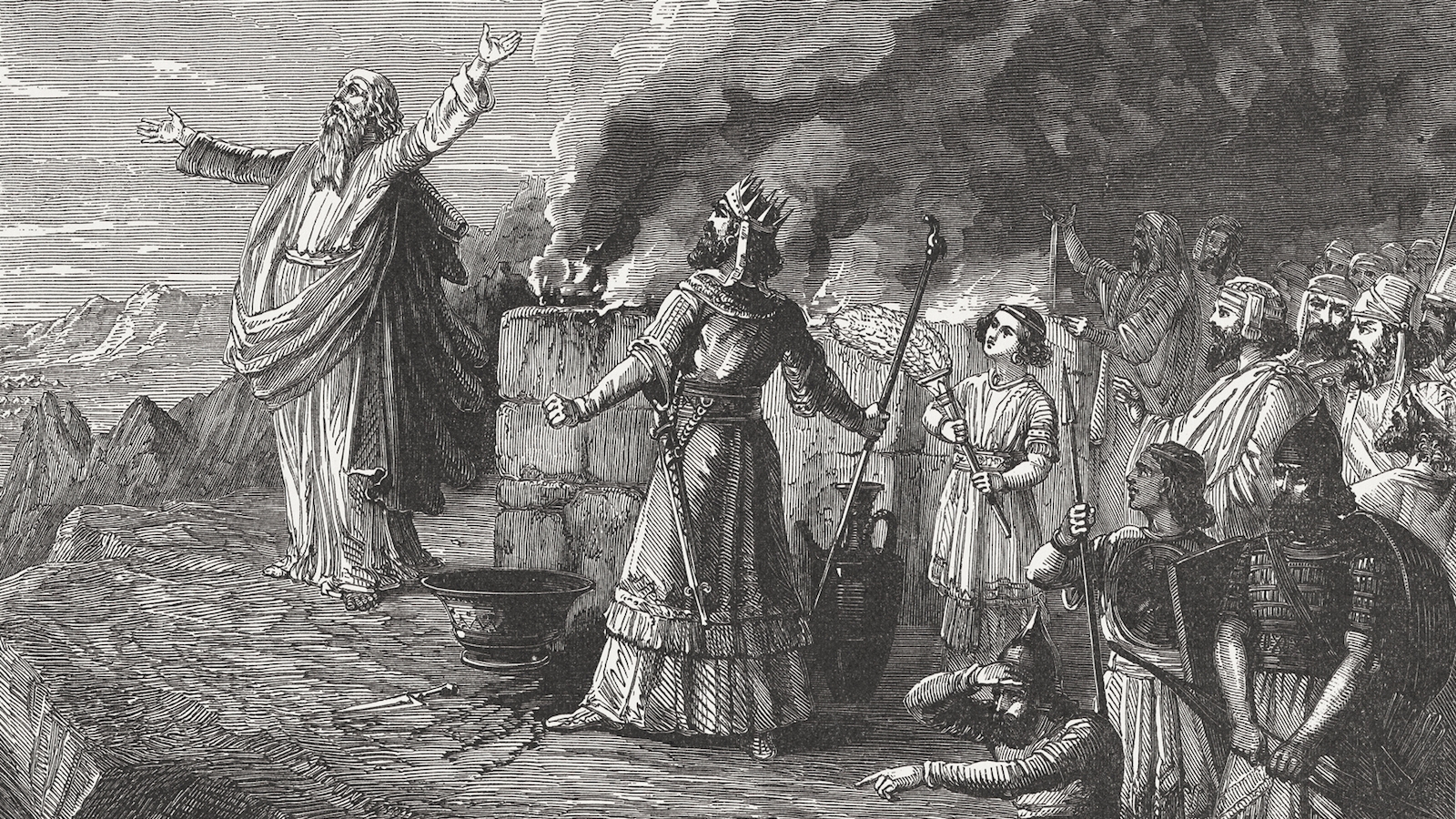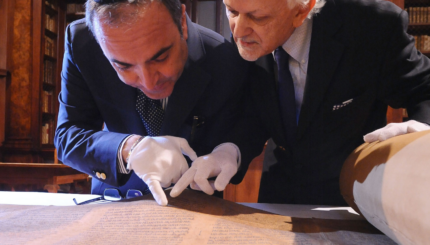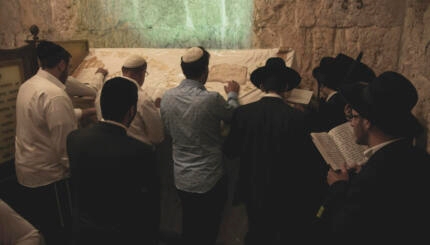Animal sacrifices are described in detail in the book of Leviticus and were offered throughout the period of the First and Second Temples.
That Gentiles as well as Jews brought sacrifices to the Temple is implied in the prayer of Solomon when he dedicated the Temple (I Kings 8:41-3) and in the declaration by the prophet that the Temple will be a house of prayer for all peoples (Isaiah 56:7). The Rabbis say (Hullin 13b): ‘Sacrifices are to be accepted from Gentiles as they are from Jews,’ although this saying dates from after the destruction of the Temple.
The significance of the role of the sacrifice in the Temple period is expressed in the saying in Ethics of the Fathers (1.3) that the world stands on three things, the Torah, the service in the Temple, and benevolence. That occasionally the prophets seem to decry the offering of sacrifices (e.g. Amos 5:21-4; Isaiah 1:11-13) is explained in the Jewish tradition, and this might well be the case, that the prophets only object to sacrifices used as an attempt to buy off God while practicing iniquities.
The ancients did not have the scruples of many moderns about offering up ‘poor defenseless animals.’ People did and still do kill animals for food and, apart from the wholly consumed burnt-offering, the meat of all the other sacrifices was eaten either by the priests or by those who brought the sacrifices.
With your help, My Jewish Learning can provide endless opportunities for learning, connection and discovery.
Order Kodashim
The whole of the Order Kodashim in the Mishnah is devoted almost entirely to the details of how the sacrifices were to be offered. This order was compiled in its present form after the destruction of the Temple but a good deal of the material undoubtedly stems from traditions in Temple times.
The order was studied, even though the laws of sacrifices had fallen into abeyance, in the belief that these were all part of the divinely revealed Torah and that the sacrificial system would one day be restored.
Medieval Explanations
Various explanations have been advanced in medieval and modern times for why God commanded that sacrifices be offered to Him. This kind of thinking was unknown to the Talmudic Rabbis. For them it was enough that God had ordained that sacrifices should be offered and they saw no need to ask why. But from the Middle Ages onwards, attempts were made to provide what seemed to be to those who made them plausible reasons for the sacrificial cult.
According to Maimonides, in his Guide of the Perplexed, the sacrifices were ordained in order to wean the people of Israel away from idolatry, as if God were to say: if the idea of offering sacrifices has taken too strong a hold on you to be totally eradicated, at least offer the sacrifices in a central place and observe the rules in order to avoid the excesses practiced by the idolaters when they sacrifice to their gods.
Nahmanides cannot accept such a facile view and Maimonides himself, in his Code, records all the laws of sacrifices and prayers for their restoration, which hardly suggests that the sacrifices were, for him, no more than an emergency measure.
For Ibn Ezra and Nahmanides the sacrifices are symbolic. When a man offered a guilt-offering, for example, the killing of the animal and the offering of its blood and fat on the altar were a symbolic way of saying that this should have been the fate of the sinner were it not for God’s mercy.
A further reason advanced for the system is that the meat of the sacrifices was to be eaten in a holy place, the Temple for some sacrifices, anywhere in Jerusalem for others, and this turned the very act of eating into a sacred act by which man is brought nearer to God.
In the Kabbalah, animal sacrifices provided the link between the animal world and human beings and between the world of human beings and the higher realms of the Sefirot as the smoke on the altar ascended.
Restoring the Sacrifices?
Although, in the nineteenth century, suggestions were put forward for the Temple to be rebuilt and sacrifices offered there once again, these were not taken seriously since, among other objections, the actual site of the altar is now unknown; corpse contamination cannot now be removed in the absence of the red heifer; and there are no means of establishing the claim of the priests that they really are such.
Thus the restoration of the sacrificial system was left to the Messiah. There was even an opinion in the Middle Ages, quoted by Rashi, that the Third Temple would drop ready-made from heaven.
The Orthodox position today is that the offering of sacrifices will be carried out only when the Messianic age dawns and their restoration is not a matter of practical concern in the here and now, although there is a Yeshivah in Jerusalem in which the Order of Kodashim is studied assiduously so that scholars will be able to advise on how the sacrifices are to be offered when the Messiah does come.
Sacrifices in Jewish Liturgy
After the destruction of the Temple the verse ‘we will render the bullocks of our lips (Hosea 14:3)’ was understood to mean that the repetition of the details of the sacrificial cult in prayer and the prayers for its restoration are accounted as if the sacrifices were actually offered in the Temple. But the prayers were not seen as a mere formality to make up for the loss.
The belief remains strong in Orthodoxy that these prayers will be answered by God and the sacrifices restored. Prayers for the restoration of the sacrifices are scattered through the traditional liturgy. Especially in the Additional service, Musaf, on Sabbaths and festivals, the prayer is recited for Israel to be restored to its homeland, the Temple to be rebuilt, and the sacrifices offered.
Reform Judaism, in the last century, reinterpreted the Messianic hope in universalistic terms and rejected not only prayers for the restoration of sacrifices but the whole idea of Israel’s return to its homeland.
While Reform Judaism today has a much more positive attitude to the return, the Reform attitude is still too universalistic to permit references to the old sacrificial system in prayer. Sacrifices were, indeed, once highly significant but they have now been superseded under divine guidance.
Conservative Judaism, on the other hand, believes that to delete from the Prayer Book all references to the sacrifices is to ignore the significant role the sacrifices played in Jewish history. And yet, since many Jews do not believe that the sacrificial system will one day be restored, to pray for its restoration is to engage in double-think.
To cope with this problem, the Conservative Prayer Book retains the references to the system but substitutes for the words ‘and there we will offer’ the words: ‘and there our forefathers offered.’
Reprinted from The Jewish Religion: A Companion, published by Oxford University Press.
Mishnah
Pronounced: MISH-nuh, Origin: Hebrew, code of Jewish law compiled in the first centuries of the Common Era. Together with the Gemara, it makes up the Talmud.
Torah
Pronunced: TORE-uh, Origin: Hebrew, the Five Books of Moses.



